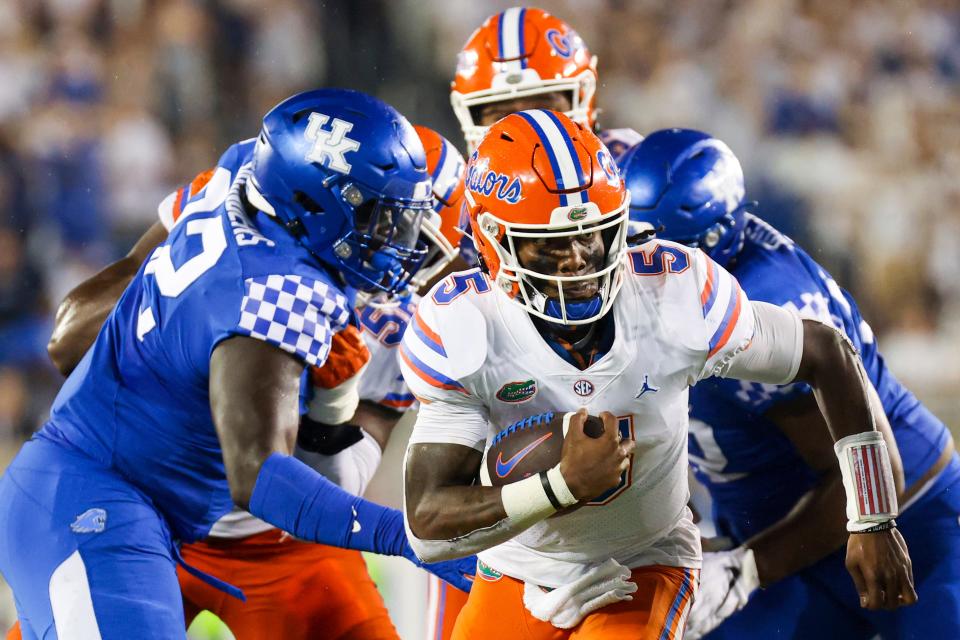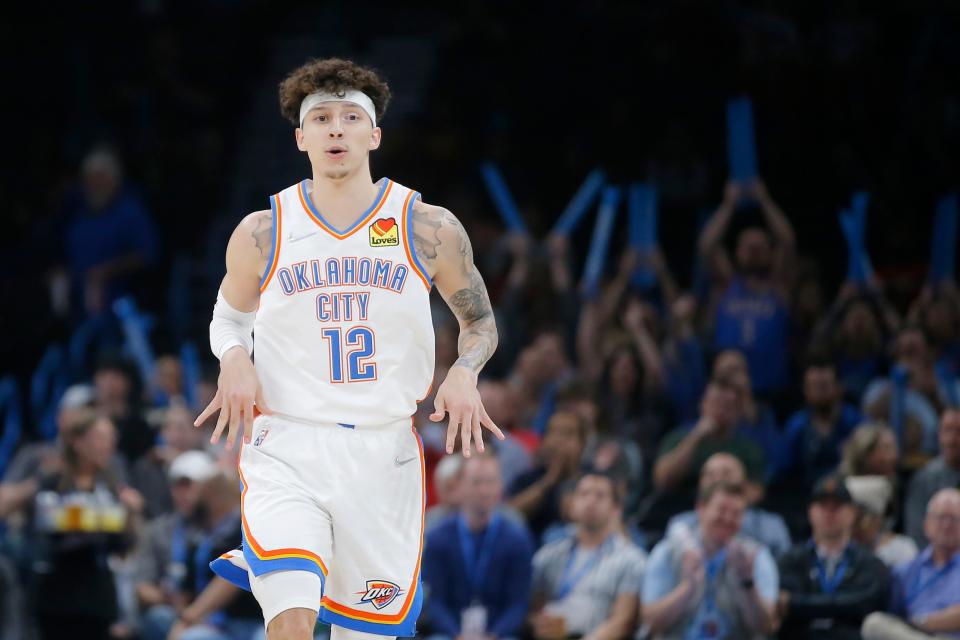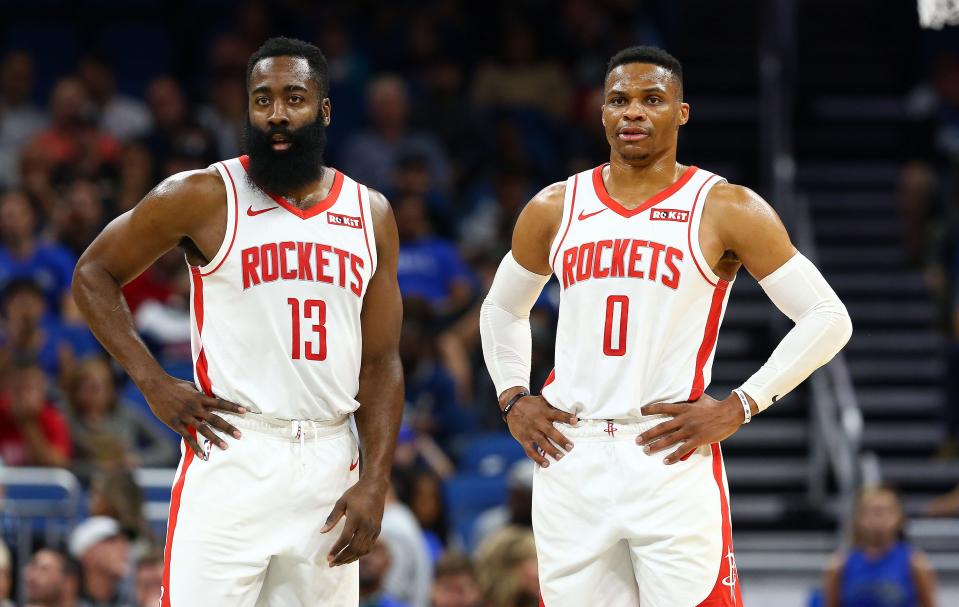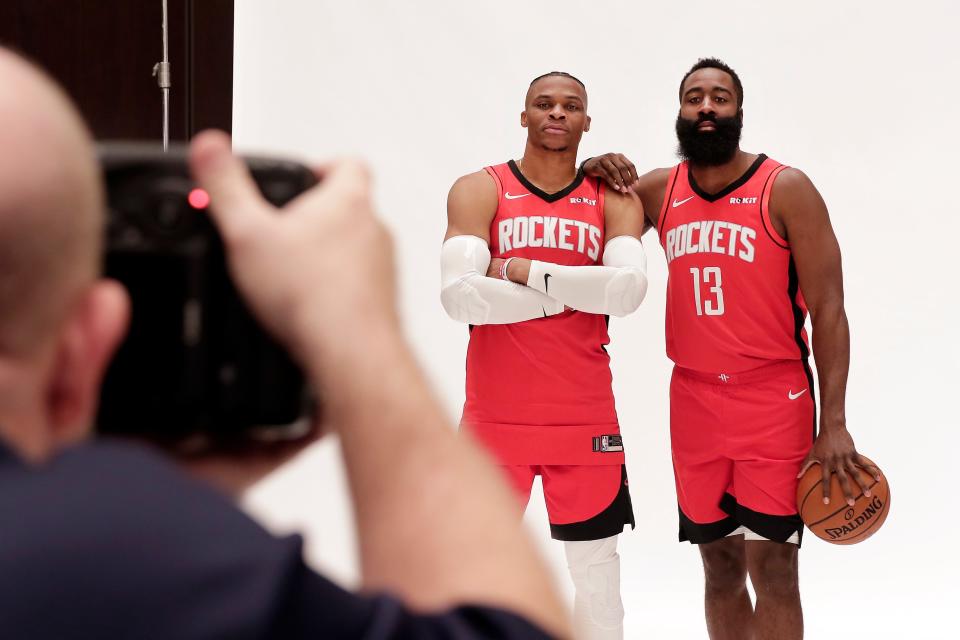Tramel's ScissorTales: Emory Jones' transfer to Arizona State adds spice to Oklahoma State football schedule
Oklahoma State’s Sept. 10 home game against Arizona State has just become a lot more interesting and perhaps more competitive.
ESPN reported that Florida quarterback Emory Jones, who entered the transfer portal during spring practice, will transfer to ASU and be eligible immediately.
Jones had an embattled fourth season at Florida in 2021 but definitely should upgrade the Sun Devils’ quarterback situation.
In February, ASU quarterback Jayden Daniels announced he was entering the transfer portal, and indeed Daniels landed at Louisiana State. That left the Sun Devils with two options at QB, Paul Tyson and Trenton Bourguet, neither of whom have played a college down. Tyson, the great-grandson of Bear Bryant, is an Alabama transfer who was not considered a top prospect. Bourguet was Daniels’ backup.
But Jones has played. He was Florida’s starting quarterback in 2021, when the Gators struggled through a 6-7 season that included the firing of coach Dan Mullen.
Tramel's ScissorTales: NFL Draft shows how well coached Oklahoma State football was in 2021

Florida fans clamored for backup Anthony Richardson, who occasionally played, but neither was all that effective.
Jones threw four interceptions and just one touchdown pass as UF got off to a 2-0 start against inferior competition, but the Gators rallied and almost upset Alabama before losing 31-29.
Jones, a three-year backup, for the season completed 64.7% of his passes, with 19 touchdowns and 13 interceptions. His 2021 passer rating of 141.7 is about the same as Spencer Sanders’ career rating of 139.6.
But Jones’ numbers were inflated by a 70-52 victory over Samford, in which he completed 28 of 34 passes for 464 yards and six touchdowns. Take away that game against a Division I-AA opponent, and Jones’ numbers were .628 completion percentage, 13 touchdowns, 13 interceptions and 174.6 passing yards per game.
But like Sanders, Jones is a dual threat. He rushed for 759 yards last season.
Jones long has been a highly-touted prospect. Coming out of LaGrange, Georgia, he was a top-60 (ESPN) recruit and originally committed to Ohio State.
Arizona State is 25-18 in four seasons under coach Herm Edwards, but the Sun Devils have been embroiled in controversy much of that time, with NCAA investigations and staff upheaval. ASU is not expected to contend for the Pac-12 South Division title this season.
But Jones gives ASU a quarterback upgrade. Sept. 10 in Stillwater just became more interesting.
Tramel: Re-recruiting players is just part of the NCAA coaching gig these days
Thunder report card: Lindy Waters III
Lindy Waters III became a cult hero with his Cinderella story late in the Thunder season. Our series of Thunder report cards continues with the 6-foot-5 wing from Oklahoma State.
Three-point shooting: B. Waters’ chances to stick in the NBA hinge on his ability to make the deep shot. And he mostly was impressive in his 25-game audition, making 36.3% of his 3-point attempts. Even better, Waters shot 38.2% from outside the corners. Waters was just 11-of-36 from the corners, where you’d think he’d eventually be fine. The above-the-break shot is the test, and Waters mostly impressed.
Handling pressure: A. Waters’ willingness to seize the day was underrated. Here’s a local guy, a minor-league journeyman, already 24 years old, who gets an unexpected NBA shot, who knows he has to make shots, and in his first 15 games makes just 29.4% of his 3-pointers and not much of an impact. Waters had to be wondering if his chance was lost. But in his last 10 games, Waters’ playing time went up – from 16.2 minutes per game to 22.1 -- and his production soared. Waters shot 42.3% from deep over that span, averaging 11.7 points. He looked like an NBA player. Waters made the most of his chance.
More: What's next for Derrick Favors after first season with OKC Thunder? 'I enjoy being in this atmosphere'

Playmaking: C. Waters committed few turnovers – 11 in 465 minutes played. His turnover percentage (turnovers divided by possessions used) of 5.8 was the lowest of any Thunder except centers Derrick Favors and Muscala. But Waters’ assist rate wasn’t high, 8.1 (percentage of opponents’ baskets on which he assisted while on the court), which was the lowest of any non-interior Thunder. Waters wasn’t much of a driver; only 24 of his 175 shots came from 10 feet or in. He shot only four non-paint 2-pointers.
Effect on games: A. Waters played during a stretch of the season when the Thunder was in full shutdown mode. Waters played just 10 games with Shai Gilgeous-Alexander. Just four with Josh Giddey. Two each with Luguentz Dort and Kenrich Williams. None with Mike Muscala. The Thunder was set up to fail when Waters played, yet he had one of the better net ratings on the squad, minus-5.0 -- the Thunder was outscored by five points per 100 possessions, with Waters on the court. That was fifth-best among players with at least 25 games, and of those four players with better ratings, only Aleksej Pokusevski played down the stretch of the season. Waters’ net rating was a plus 3.8 over how the Thunder fared with Waters off the court in games he played. And perhaps the best sign of Waters’ emergence; when OKC completely tanked the final two games of the season and brought up G League players with virtually no NBA future, Waters was benched. The Thunder didn’t want to risk it. He was too good.
Defense: C. Still a work in progress. Waters wasn’t overmatched most games, but his defensive rating of 113.2 (Thunder points allowed per 100 possessions with the Waters on the court) was among the worst on the squad. Waters was billed as a 3-point specialist when he arrived on the Thunder roster and proved to be much more than that, but defensive improvement would go a long way to keeping him in the league.
More: NBA Draft Lottery has Thunder fans on edge. As for the players? They 'don't really care'
Mailbag: Robin Ventura & the Hall of Fame
Our man Jacob Unruh wrote a nice piece the other day on baseball icon Robin Ventura, prompting a question.
Del: “You have a large microphone. Do you consider Robin Ventura Hall of Fame worthy, and if so, do you have a Hall of Fame vote?”
Tramel: No. I don’t have a Hall of Fame vote. I’m not a member of the Baseball Writers Association of America. Only BBWAA members of at least 10-year standing get to vote. I don’t vote for anything except civic elections and the Oklahoma Sports Hall of Fame.
As for Ventura, I tend to say no. His numbers don't shout Cooperstown: 294 home runs, which is good but not great for the 1990-00s; 1,885 hits, 1,182 runs, excellent third baseman.
Baseball-reference.com has a great tool in which it compares players statistically. The five most comparable third basemen to Ventura are Ron Cey, Todd Zeile, Evan Longoria, Sal Bando and Ken Boyer. All wonderful players. That kind of company is a gold star on Ventura's career. But none are in the Hall of Fame.
'A three-stage knockout': How Oklahoma State's rally to sweep Texas built even more confidence
Trade idea: Russell Westbrook for James Harden
Not that long ago, we all figured Russell Westbrook had an untradeable contract.
Then the Thunder traded Westbrook to Houston for Chris Paul – with the Rockets tossing in extra draft picks – and we all noted that Paul had an untradeable contract, too.
A year later, the Rockets traded that same Westbrook contract to Washington for John Wall – with the Wizards tossing in a first-round draft pick – and we all noted that Wall had an untradeable contract, too.
A year after that, the Wizards traded Westbrook to the Lakers, finally for something other than another horrid contract. In a five-team trade, here are the relevant moves. The Lakers got Westbrook and three second-round draft picks. The Wizards got Kentavious Caldwell-Pope, Montrezl Harrell and Kyle Kuzma from the Lakers; Spencer Dinwiddie from Brooklyn; and Aaron Holliday and Isaiah Todd from Indiana. The Lakers also lost Isaiah Jackson to the Pacers, and the Wizards lost Chandler Hutchison to the Spurs, plus those three second-round picks.
Westbrook’s untradeable contract has been traded three times, and one year remains on the deal, at $47 million. And of course, the Lakers want to trade it.
Westbrook’s year in Los Angeles was a disaster, with media, fans and even some teammates quickly realizing that Westbrook is a diminished star and a terrible fit with LeBron and Anthony Davis. The Lakers finished 33-49, out of the playoffs.
Much of the season was spent speculating how the Lakers could move Westbrook again. And even discounting the contract, who would want Westbrook? And among the few teams that might take a flier on the mercurial 33-year-old, who also would line up as a trade partner?
Charlotte, maybe. Sacramento? You run out of options quickly.
Is the Lakers’ best hope to return to the original Westbrook trade plan? Trade Westbrook’s untradeable contract for another untradeable contract?
How about trading Westbrook for James Harden?
Harden is another slipped superstar, now toiling for the 76ers in a futile Eastern Conference semifinal series against Miami.
Harden himself has been touring the wide expanse of the NBA in recent years.
Tramel's ScissorTales: Will Thunder benefit from Western Conference slippage? Depends on whom you ask

In the last 16 months, Harden has been traded twice. From Houston to Brooklyn, for four first-round draft picks plus Dante Exum, Rodions Kurucs and Victor Oladipo. Then from Brooklyn to Philadelphia, with Paul Millsap, for Ben Simmons, Seth Curry, Andre Drummond and two first-round draft picks.
The latter was a trade both teams had to make. Harden wanted out of Brooklyn; his partnership with Kevin Durant and Kyrie Irving, like Harden’s co-op with Paul, then Westbrook, in Houston having gone quickly sideways. Simmons had become persona non grata in Philly, sitting out the entire season and alienating himself from the organization after a 2021 playoff debacle.
Seemed like a good trade for the 76ers, at least in the short term. But the more we see of Harden, at age 32, the more we ask, what does he have left?
Harden’s perimeter defense always has been lacking effort and effect. Rule changes have reduced his offensive prowess; Harden no longer has a vacation home on the foul line. Harden appears overweight and out of shape, and that’s judging on the curve. He never was known as a physical phenom.
A Harden/Joel Embiid pairing seemed perfect. But it hasn’t been, even before Embiid’s playoff injury, and Harden seems to wear on fellow stars fast. Paul wanted away from Harden in less than two seasons together. It took Westbrook one year to want out. Durant and Irving didn’t make it a full season before the fractures started.
I don’t know how the 76ers view Harden. Do they want to re-sign him after next season, when he will be paid $46 million? Seems dicey. Out of shape. Injury prone. Declining skills. That doesn’t sound like a long-range plan.
Are there chemistry issues in Philly? If not, will there be?
The 76er window remains open as long as Embiid’s around; he’s 28 and one of the NBA’s best five players. But the clock is ticking. It’s always ticking.
Does Harden expedite or impede the 76ers’ championship hopes?
Of course, it’s not like Westbrook is a ticket to paradise. He’s 33 with declining effectiveness, too. Westbrook hasn’t been on Harden’s level as a player in several years.

And Westbrook also brings chemistry issues. Not the Harden kind. Just the style of play kind, and sometimes personality issues. Westbrook can wear on a roster.
But Westbrook has shown the ability to acquiesce, to some degree. He changed his game in Houston with Harden, and in D.C. with Bradley Beal, and he tried in Los Angeles, although that was such a train wreck nothing could work.
Westbrook is not a great fit with Embiid. Westbrook always has been the worst kind of outside shooter – frequent taker, infrequent maker – and it’s getting worse. Westbrook’s 3-point percentage the last four seasons: .298, .315, .258, .290.
Harden’s numbers are declining, too. He has missed 17 and 28 games the last two seasons, his 3-point percentage fell to .330 this season and those whistles no longer go his way.
Worst of all, Harden’s attitude, never a strength, appears to be getting worse.
That’s not a problem with Westbrook. Teammates might grow frustrated at his play, but you never wake up and wonder if Westbrook will be all in come tipoff. The Houston stories of Harden’s prima donna status have become legion.
And that’s really what it comes down to. The 76ers were dealt a tough blow when Simmons went from undependable star to non-existent. Harden was an interesting experiment in exchange.
But if the Sixers come to believe Harden is as much of a detriment as a solution, might they consider going with Westbrook instead? Trading production for fire. Trading efficiency for will.
Most NBA people would say the 76ers would be nuts to make such a deal. And they would be right. Unless you’ve had to go through a season with Harden and decide anything beats this.
The careers of Harden and Westbrook keep intersecting. Born 299 days apart in Greater Los Angeles, grew up as basketball contemporaries, Pac-12 opponents, Thunder teammates, then Rocket teammates.
Could they become cornerstones in a trade of untradeable contracts? Wouldn’t be the first time. Or the second.
OKC Thunder offseason primer: Draft picks, salary decisions and preparing for 2023
The List: Controversial race finishes
The Kentucky Derby will be run Saturday, and the Run for the Roses has become a run for controversy. Two of the last three Derbys have been won by horses that did not reach the finish line first.
It’s almost a May tradition. The Indianapolis 500 twice over the decades has been marred by controversy. Here are five races between the two May spectacles that did not produce a satisfying conclusion:
1968 Kentucky Derby: Dancer’s Image crossed the finish line first, but three days later, Churchill Downs announced that Dancer’s Image had been disqualified after traces of phenylbutazone were discovered in his urine. Forward Pass was declared the winner. Dancer’s Image owner Peter Fuller said he suspected his horse was drugged by people upset that Fuller was contributing to causes supporting the Civil Rights movement.
1981 Indy 500: Bobby Unser took the checkered flag, with Mario Andretti second. But United States Auto Club officials ruled Unser had passed cars illegally while exiting the pit area on lap 149 of 200. On Monday morning, Andretti was declared the winner. Protests and appeals ensued, and finally, in October, Unser was reinstated as the winner.
2002 Indy 500: Helio Castroneves was declared the winner, though Paul Tracy’s car crossed the finish line first. With less than two laps left in the race, a crash between Laurent Redon and Buddy Lazier produced a caution light, which means all racing was to cease. Who had the lead at Turn 3 became the deciding factor. The Indy Racing League declared Castroneves the winner at the race’s conclusion and stayed with that decision after more than three hours of post-race investigation. But Tracy maintained he had swept around Castroneves before Turn 3. ESPN footage and fellow drivers seemed to support Tracy’s assertion. But Castroneves remained the winner.
2019 Kentucky Derby: Maximum Security crossed the finish line first, but Churchill Downs stewards disqualified the thoroughbred and declared Country House the winner, alleging that Maximum Security swerved into the paths of War of Will and Long Range Toddy, causing them to break stride.
2021 Kentucky Derby: Medina Spirit crossed the finish line first. But a week later, track stewards announced that Medina Spirit had tested positive for betamethasone, a banned substance, and was disqualified. Mandaloun was declared the winner. Trainer Medina Spirit Bob Baffert was suspended. He appealed, but the final decision came in February. Mandaloun the winner.
Berry Tramel: Berry can be reached at 405-760-8080 or at btramel@oklahoman.com. He can be heard Monday through Friday from 4:40-5:20 p.m. on The Sports Animal radio network, including FM-98.1. Support his work and that of other Oklahoman journalists by purchasing a digital subscription today.
This article originally appeared on Oklahoman: Emory Jones' transfer to Arizona State adds spice to OSU football game

